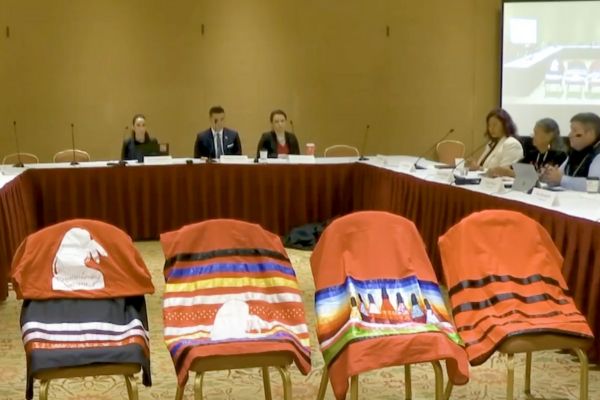
- Details
- By Kaili Berg
New Mexico has taken a significant step to address the crisis of missing and murdered Indigenous people (MMIP) by launching the Turquoise Alert System, a specialized alert mechanism aimed at rapidly disseminating information when Native Americans go missing.
This initiative positions New Mexico as the fourth state in the U.S. to implement such a system, following California, Washington, and Colorado.
The Turquoise Alert system aims to provide a rapid and coordinated response when Native American individuals are reported missing.
It will operate similarly to the Amber and Silver Alerts, using law enforcement, media, social platforms, and highway signs to disseminate information quickly and widely.
“Too many Native American families have faced crisis and the heartbreak of a loved one disappearing without the swift response they deserve,” Josett D. Monette, Cabinet Secretary of the New Mexico Indian Affairs Department said in a press release. “The Turquoise Alert System is a critical step forward in ensuring that missing Native American people are prioritized in the same way as other emergency alerts.”
According to the New Mexico Department of Justice, there are roughly 200 active missing Indigenous cases in the state, with the average individual missing for more than 1,600 days.
The Turquoise Alert system is designed to close the longstanding gaps in response that have plagued MMIP cases, particularly in jurisdictions where tribal and non-tribal law enforcement coordination has been inconsistent or delayed.
The system will be managed by the New Mexico Department of Public Safety or the lead law enforcement agency on a given case.
Alerts will be issued based on specific criteria to ensure urgency and clarity, while also requiring record-keeping on key metrics like age, gender, date of report, and date of recovery.
“Communities like mine are all too familiar with the crisis of missing and murdered Indigenous people,” Representative Michelle Paulene Abeyta (D-To’hajiilee) said in a press release. “For years now, we have stepped up on our own. Establishing the Turquoise Alert will allow the state to amplify these community-led efforts.”
SB41 also directly supports Objectives 5 and 6 of the state’s MMIP Response Plan, further integrating the alert into New Mexico’s broader strategy to combat the crisis.
If signed by the governor, the Turquoise Alert system will officially go into effect on July 1, 2025. In the meantime, state and tribal agencies are expected to prepare implementation protocols and coordinate outreach to communities across New Mexico.
“Their advocacy has been instrumental in bringing the Turquoise Alert System to reality,” New Mexico Indian Affairs Department said in a press release. “This is a significant advancement in protecting Native communities.”
More Stories Like This
Native News Weekly (August 25, 2024): D.C. BriefsUS Presidents in Their Own Words Concerning American Indians
Montana County Redraws District After Settlement to Ensure Chippewa Cree Votes Count
Tunica-Biloxi Council Member Named to Tribal Leadership Foundation
Ethics Complaint Alleges Former Navajo Nation Chief of Staff Accepted Gifts From Contractor
Help us defend tribal sovereignty.
At Native News Online, our mission is rooted in telling the stories that strengthen sovereignty and uplift Indigenous voices — not just at year’s end, but every single day.
Because of your generosity last year, we were able to keep our reporters on the ground in tribal communities, at national gatherings and in the halls of Congress — covering the issues that matter most to Indian Country: sovereignty, culture, education, health and economic opportunity.
That support sustained us through a tough year in 2025. Now, as we look to the year ahead, we need your help right now to ensure warrior journalism remains strong — reporting that defends tribal sovereignty, amplifies Native truth, and holds power accountable.
 The stakes couldn't be higher. Your support keeps Native voices heard, Native stories told and Native sovereignty defended.
The stakes couldn't be higher. Your support keeps Native voices heard, Native stories told and Native sovereignty defended.
Stand with Warrior Journalism today.
Levi Rickert (Potawatomi), Editor & Publisher


